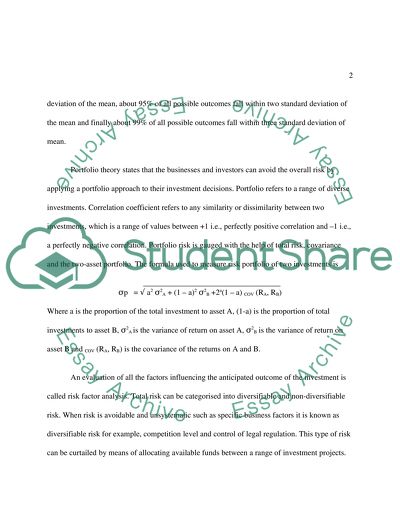Cite this document
(Risk Portfolio and CAPM Case Study Example | Topics and Well Written Essays - 2000 words, n.d.)
Risk Portfolio and CAPM Case Study Example | Topics and Well Written Essays - 2000 words. Retrieved from https://studentshare.org/finance-accounting/1538684-business-finace-risk-capm-and-investment-appraisal
Risk Portfolio and CAPM Case Study Example | Topics and Well Written Essays - 2000 words. Retrieved from https://studentshare.org/finance-accounting/1538684-business-finace-risk-capm-and-investment-appraisal
(Risk Portfolio and CAPM Case Study Example | Topics and Well Written Essays - 2000 Words)
Risk Portfolio and CAPM Case Study Example | Topics and Well Written Essays - 2000 Words. https://studentshare.org/finance-accounting/1538684-business-finace-risk-capm-and-investment-appraisal.
Risk Portfolio and CAPM Case Study Example | Topics and Well Written Essays - 2000 Words. https://studentshare.org/finance-accounting/1538684-business-finace-risk-capm-and-investment-appraisal.
“Risk Portfolio and CAPM Case Study Example | Topics and Well Written Essays - 2000 Words”. https://studentshare.org/finance-accounting/1538684-business-finace-risk-capm-and-investment-appraisal.


